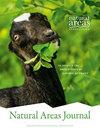冠层覆盖度和冠层异质性驱动中西部栎树草原植物α多样性而非β多样性
IF 0.8
4区 环境科学与生态学
Q4 ECOLOGY
引用次数: 0
摘要
摘要:中西部橡树稀树草原是美国植物多样性最高的地区,也是全球最稀有的陆地生态系统之一。因此,了解这些生态系统内的多样性模式对于制定管理和恢复目标至关重要。本研究旨在了解树冠覆盖和树冠覆盖异质性在影响橡树草原生态系统中植物α和β多样性中的作用。这项研究发生在美国印第安纳州西北部密歇根湖南岸的印第安纳沙丘的黑橡树稀树草原上。我们对印第安纳沙丘的29个1000平方米的地块进行了采样,这些地块的冠层覆盖和冠层异质性呈梯度,以检验冠层覆盖和树冠异质性对植物多样性的影响。木本植物α多样性在树冠覆盖率高(>75%)的地区最高。C3禾本科植物、C4禾本科植物和莎草α多样性在低冠层覆盖区最高(<25%)。低至中等冠层覆盖率(25-50%和20-35%)的牧草和豆类α多样性最高。总体而言,植物阿尔法多样性在中间冠层覆盖下最高。高冠层异质性与高α多样性相关。冠层覆盖或冠层异质性与β多样性之间没有关系。然而,所有站点的β多样性都异常高。25–50%的平均冠层覆盖率是促进许多功能群植物高度多样性的最佳覆盖率。尽管如此,低和高冠层覆盖位点对于最大限度地提高某些功能群的多样性也很重要。因此,我们建议对橡树稀树草原进行25%至50%的树冠覆盖管理,以最大限度地提高多样性,但如果在橡树稀树树草原的大量残余中存在机会,则维护一些树木稀少的区域和其他树冠封闭的区域可以最大限度地增加景观规模的多样性。本文章由计算机程序翻译,如有差异,请以英文原文为准。
Canopy Cover and Canopy Heterogeneity Drive Plant Alpha Diversity But Not Beta Diversity in a Midwest Oak Savanna
ABSTRACT Midwest oak savannas contain some of the highest plant diversity in the United States and are among the rarest terrestrial ecosystems globally. Consequently, understanding diversity patterns within these ecosystems is important for setting management and restoration goals. This study aimed to understand the role of canopy cover and heterogeneity in canopy cover in influencing plant alpha and beta diversity within oak savanna ecosystems. This study took place in the black oak savannas of the Indiana Dunes along the southern shores of Lake Michigan in NW Indiana, USA. We sampled twenty-nine 1000 m2 plots with gradients in canopy cover and canopy heterogeneity across the Indiana Dunes to examine the influence of canopy cover and canopy heterogeneity on plant diversity. Woody plant alpha diversity was highest in areas with a high canopy cover (>75%). C3 graminoids, C4 graminoids, and sedge alpha diversity were highest in low canopy cover areas (<25%). Forb and legume alpha diversity were highest with low to intermediate canopy cover (25–50% and 20–35%). Overall, plant alpha diversity was highest at intermediate canopy cover. High canopy heterogeneity was associated with high alpha diversity. There was no relationship between canopy cover or canopy heterogeneity with beta diversity. However, beta diversity was exceptionally high within all sites. An average canopy cover of 25–50% is the optimal cover for promoting high plant diversity across many functional groups. Still, low and high canopy cover sites are also important for maximizing diversity of some functional groups. Therefore, we recommend managing oak savannas for 25–50% canopy cover to maximize diversity, but where opportunities exist in large remnants of oak savanna, maintaining some areas with few trees and other areas with closed canopies can maximize diversity on a landscape scale.
求助全文
通过发布文献求助,成功后即可免费获取论文全文。
去求助
来源期刊

Natural Areas Journal
环境科学-林学
CiteScore
1.70
自引率
11.10%
发文量
50
审稿时长
>36 weeks
期刊介绍:
The Natural Areas Journal is the flagship publication of the Natural Areas Association is the leading voice in natural areas management and preservation.
The Journal features peer-reviewed original research articles on topics such as:
-Applied conservation biology-
Ecological restoration-
Natural areas management-
Ecological assessment and monitoring-
Invasive and exotic species management-
Habitat protection-
Fire ecology.
It also includes writing on conservation issues, forums, topic reviews, editorials, state and federal natural area activities and book reviews. In addition, we publish special issues on various topics.
 求助内容:
求助内容: 应助结果提醒方式:
应助结果提醒方式:


